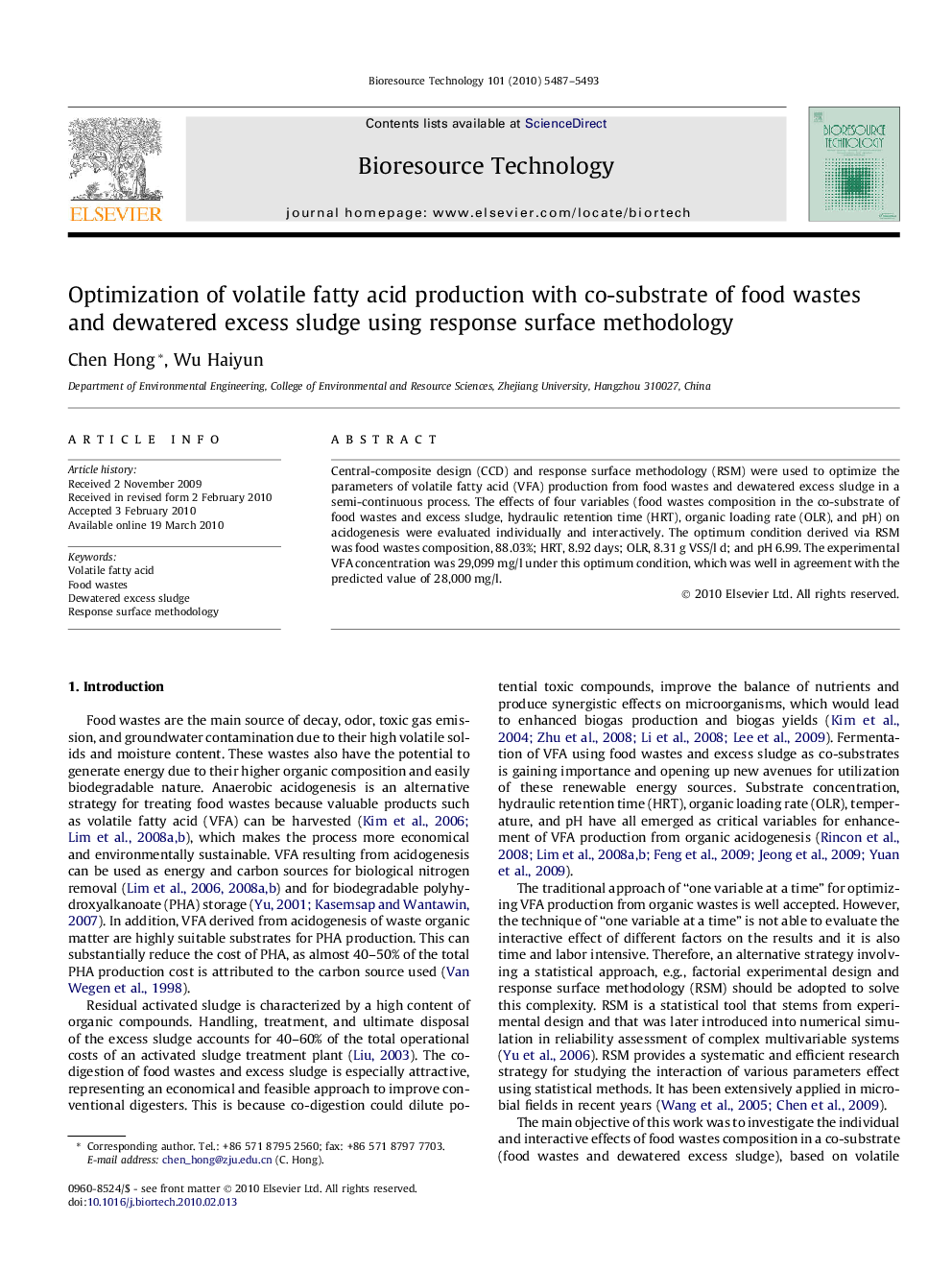| Article ID | Journal | Published Year | Pages | File Type |
|---|---|---|---|---|
| 682982 | Bioresource Technology | 2010 | 7 Pages |
Abstract
Central-composite design (CCD) and response surface methodology (RSM) were used to optimize the parameters of volatile fatty acid (VFA) production from food wastes and dewatered excess sludge in a semi-continuous process. The effects of four variables (food wastes composition in the co-substrate of food wastes and excess sludge, hydraulic retention time (HRT), organic loading rate (OLR), and pH) on acidogenesis were evaluated individually and interactively. The optimum condition derived via RSM was food wastes composition, 88.03%; HRT, 8.92 days; OLR, 8.31 g VSS/l d; and pH 6.99. The experimental VFA concentration was 29,099 mg/l under this optimum condition, which was well in agreement with the predicted value of 28,000 mg/l.
Related Topics
Physical Sciences and Engineering
Chemical Engineering
Process Chemistry and Technology
Authors
Chen Hong, Wu Haiyun,
